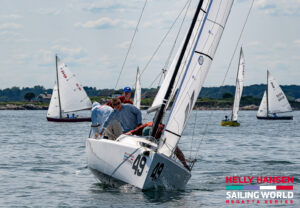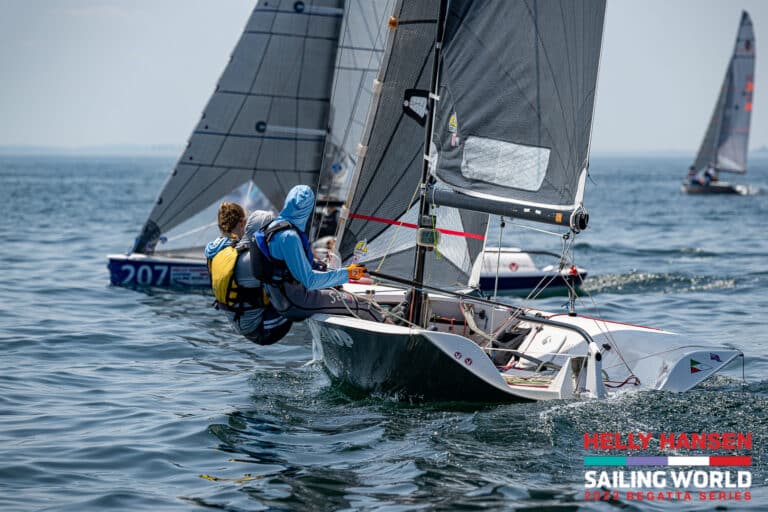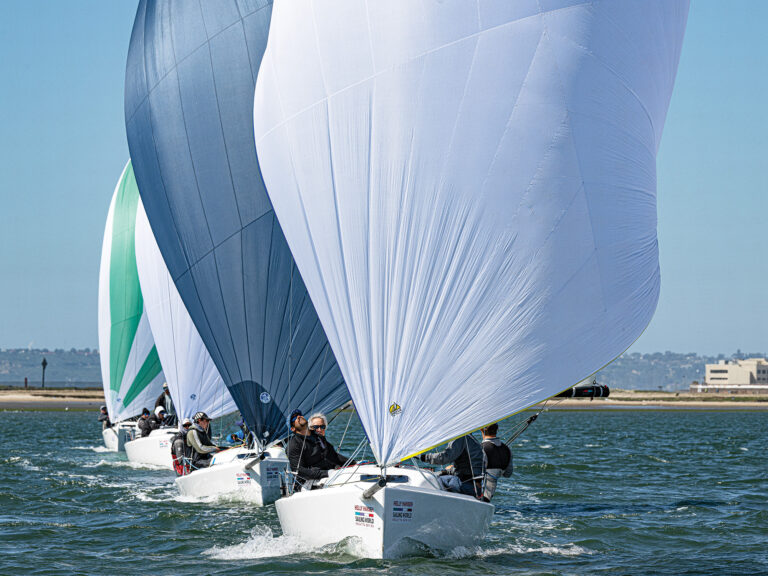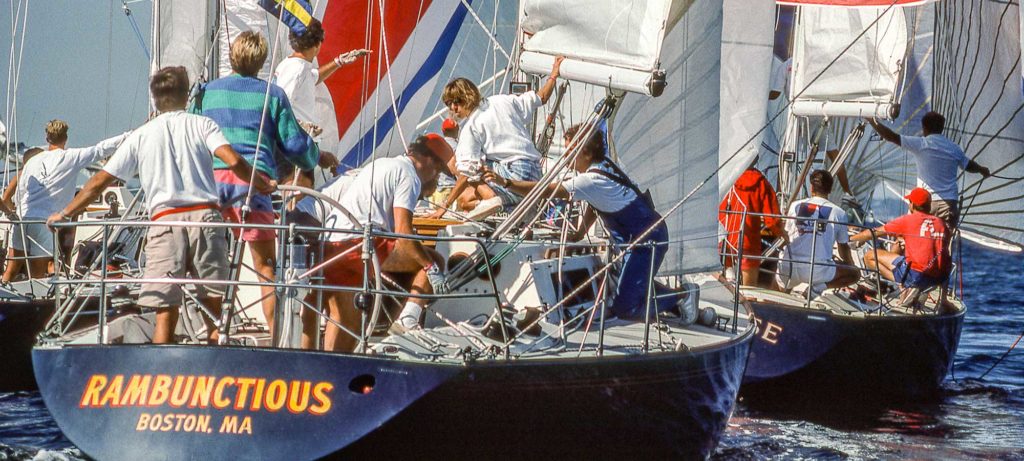
Blame it on the margaritas that fueled the first brainstorming session, or the three decades that have blitzed past since a band of sailing-magazine personnel schemed the NOOD regatta in 1988. Memories are fuzzy today, but a few of the individuals involved with the impromptu think tank one night at Yellow Kittens Tavern on Block Island, and then again later on the ferry back to the Rhode Island mainland, do remember the gist of that boozy discussion.
There was how to launch a one-of-a-kind regatta for the growing offshore one-design classes of the day, and then what to call it. “Offshore One-Design Regatta” had a good ring to it, but according to a firsthand accounts, it was Carolyn Brodsky, a young advertising type seated at the table, who pitched wider aspirations. Make it “National,” she allegedly suggested. Give the regatta a broader appeal. Add the “N,” and you’ll get a chuckle whenever you tell a stranger you’re “racing in the NOOD.”
The ring leader at the table that night, says John Burnham, the magazine’s editor until 2006, was Sailing World’s wheelin’ and dealin’ publisher, George Eddy. “George was never shy about creating regattas,” says Burnham. “The J/35 class was coming on strong, as were the Frers and Soverel fleets. Given what we’d just experienced at Block Island Race Week, he didn’t see any reason why the magazine should not have its own regatta.” At the time, weeklong festivals were the rage, with Whidbey Island and Block Island, SORC, Larchmont and a bunch of others.
 |
Subscribe Now and Save 58% |
One disagreement at the table that night was whether to make this new NOOD regatta a full-time commitment like the others or implement a more family-forgiving three-day format with registration Wednesday, and racing Thursday, Friday and Saturday. The boat went home on Sunday. "I remember the debate vividly - although I can't remember with whom at the table," says John Glynn, a contributing editor in the late 1980s. "Part of the thinking was that everyone was beat up after a full week. It was a lot, and people were starting to think about family time and having to be at work on Monday. It wasn't resolved that night, but ultimately, the version you have today won out."
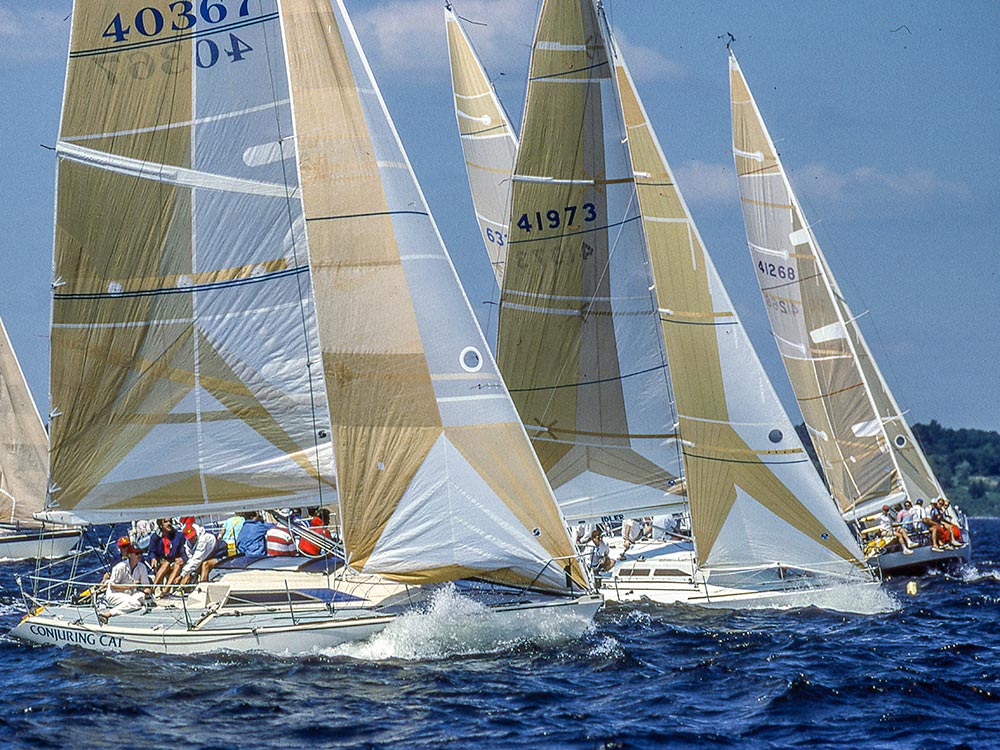
Although labeled a national regatta at the outset, there were no firm plans to launch what would become a nine-event series with regattas strung around the country and across the Canadian border. The magazine crew was wading into new territory, big-time stuff with sponsors and big tents. The race-'em, feed-'em, drink-'em model was not uncommon in sailing, but with promotion through the magazine, it would be bigger and better than your local regatta. "The prevailing regatta custom at this point was to separate cruising sailboats into different classes for racing," writes Eddy in his self-published memoirs, Who's Steering, Great Races, Unique Cruises. "Little did we know that night that this new idea would be the wave of the future. It was so simple: The first one across the finish line would be the winner - no handicaps, no time allowances."
The sailors and boat owners made a darn good audience for the likes of Audi, and eventually IBM, Jeep, GMC, Land's End, Sperry and now Helly Hansen. The fun would start in Newport, the epicenter of American yachting, in summer 1988, with 86 big boats in 10 classes and roaring parties under the big top at the Newport Yachting Center. A gigantic inflatable Smartfood bag and a towering Kahlua bottle in opposite corners offered a sign of the times. Seminars and tuning sessions fed those hungry for knowledge. And, yes, Mount Gay Rum was there. Clink, clink was the sound of Bass Ale bottles and empty rum handles soaring into trash barrels behind the bars.
It had everything - it was a success, and eventually proved it could be replicated elsewhere where keelboat sailing thrived. "The Tartan 10s were already strong in Chicago and Detroit, along with the North American 40s, the New York 40s, the Soverels, and the S2 7.9, says Burnham. "We thought of Chicago, Detroit, San Francisco and Annapolis." Audi, says Glynn, had high expectations for big turnouts at the tent parties. "Our goal as editors - and we got a lot of pressure - was to get people to show up to the parties. Audi was all about putting the product in front of people, and they did. Tent parties are what made those big events go on."
Consistency. It's the most commonly used word among winning sailors, and that, indeed, is the mark of the NOOD regatta. Racers know what to expect by now: grade-A local race management, a packed weekend of sailing, and a cheap bar to back toss a few with the team and catch up with friends. It's a simple formula, really, but a formula done well.


